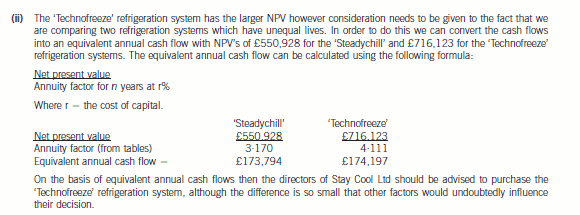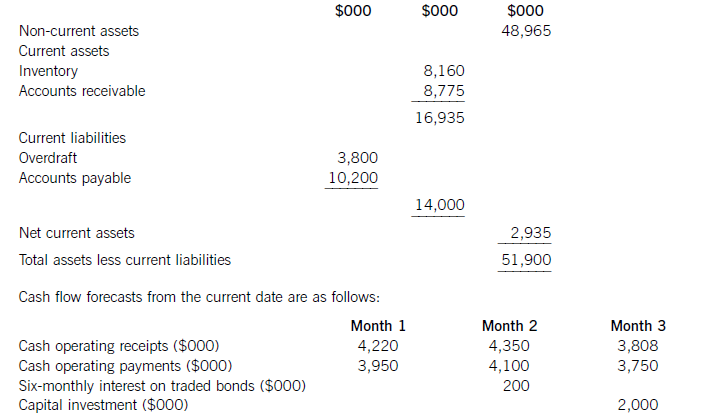2020年ACCA机考预约流程为你分享,一起来看看吧!
发布时间:2020-02-29
2020年准备参加ACCA机考考试的小伙伴看过来,关于如何预约ACCA官网机考考试,51题库考试学习网在这里为大家分享了ACCA预约机考的具体方法,一起往下看。
一、预约考试的几种方法
1、可以选择到你所在地的代表处预约机考
2、选择在线预约机考
ACCA机考官网预约考试的具体流程:
1、登录myACCA之后点击EXAM ENTRY然后进入报名页面;
2、选择机考栏目中的China,点击Book a session CBE,进入到后续报名页面;
3、然后在后续页面中选择科目等信息,机考报名的操作流程非常简单清晰,一般不会弄错;
4、点击下方考试科目自动弹出考试地点的选择,填写合适的城市就会自动生成考试报名信息,只要添加到考试计划中缴费确认即可报名成功。
另外,如果计划考试的当天无法参加考试,那么,你还可以提前更改你的预约信息,以免造成不必要的经济损失。
预约考试后,无法按时参加考试怎么办?在ACCA常规报名截止日期前,考生可进行考位的更改或取消,具体方法为:
1、登录到你的myacca账户,进入”Exam Entry”页面中,点击”View/Amend Exam Entry”进入报考更改页面。
2、进入页面后,点击”Amend
Exam Entry”进行考试报名更改。
3、更改报考的页面中,会出现初始报名的页面,如需删减考试科目,请将科目的“√”去除;如需增加科目,请直接在需报考的科目后打勾。
4、更改考试报名后,会显示出哪门科目被取消,哪门科目已报考成功,相应的费用也会在此页面中进行调整和更改。点击“Proceed to payment”进入支付页面进行付费。
学习ACCA的方法:
1、有明确的目标,并强烈向往
升职加薪或是学习更专业的知识、深化财务技能或是谋求职业转型、拓展前路,不管你考ACCA的初衷是什么,一定要想清楚再做决定。ACCA考试科目多,战线拉得也比较长,一定要坚定目标。
2、不要给自己找借口
手机是认真学习最大的“杀手”,要想专心备战ACCA考试,第一步就是要坚决抵制手机的诱惑。如果需要用手机看课件、文档和视频,建议下载下来,离线观看。避免外部打扰,心猿意马。还有最重要的一点是,不要给自己找不想学习的借口,不想学习的借口可以找到很多,但认真学习的理由只有一个。
3、养成学习习惯
最开始学习,会有足够的动力来支撑。但万事难在坚持,一方面我们应允许自己有拖延的冲动,但坚决不对它妥协,初期制定计划可预留出大战拖延的余地。另一方面,我们还可以在成功坚持一次时给自己一点奖励,比如在周末晚上的一部电影、一场篮球等——从自律中收获的成就感和激励能帮助我们更好地坚持。
今日分享时间到此结束啦,如果大家觉得意犹未尽,还想了解更多内容的话,敬请关注51题库考试学习网。
下面小编为大家准备了 ACCA考试 的相关考题,供大家学习参考。
3 Moffat Ltd, which commenced trading on 1 December 2002, supplies and fits tyres and exhaust pipes and services
motor vehicles at thirty locations. The directors and middle management are based at the Head Office of Moffat Ltd.
Each location has a manager who is responsible for day-to-day operations and is supported by an administrative
assistant. All other staff at each location are involved in fitting and servicing operations.
The directors of Moffat Ltd are currently preparing a financial evaluation of an investment of £2 million in a new IT
system for submission to its bank. They are concerned that sub-optimal decisions are being made because the current
system does not provide appropriate information throughout the organisation. They are also aware that not all of the
benefits from the proposed investment will be quantitative in nature.
Required:
(a) Explain the characteristics of THREE types of information required to assist in decision-making at different
levels of management and on differing timescales within Moffat Ltd, providing TWO examples of information
that would be appropriate to each level. (10 marks)
(a) The management of an organisation need to exercise control at different levels within an organisation. These levels are often
categorised as being strategic, tactical and operational. The information required by management at these levels varies in
nature and content.
Strategic information
Strategic information is required by the management of an organisation in order to enable management to take a longer term
view of the business and assess how the business may perform. during that period. The length of this longer term view will
vary from one organisation to another, being very much dependent upon the nature of the business and the ability of those
responsible for strategic direction to be able to scan the planning horizon. Strategic information tends to be holistic and
summary in nature and would be used by management when, for example, undertaking SWOT analysis. In Moffat Ltd
strategic information might relate to the development of new services such as the provision of a home-based vehicle recovery
service or the provision of twenty-four hour servicing. Other examples would relate to the threats posed by Moffat Ltd’s
competitors or assessing the potential acquisition of a tyre manufacturer in order to enhance customer value via improved
efficiency and lower costs.
Tactical information
Tactical information is required in order to facilitate management planning and control for shorter time periods than strategic
information. Such information relates to the tactics that management adopt in order to achieve a specific course of action. In
Moffat Ltd this might involve the consideration of whether to open an additional outlet in another part of the country or
whether to employ additional supervisors at each outlet in order to improve the quality of service provision to its customers.
Operational information
Operational information relates to a very short time scale and is often used to determine immediate actions by those
responsible for day-to-day management. In Moffat Ltd, the manager at each location within Moffat Ltd would require
information relating to the level of customer sales, the number of vehicles serviced and the number of complaints received
during a week. Operational information might be used within Moffat Ltd in order to determine whether staff are required to
work overtime due to an unanticipated increase in demand, or whether operatives require further training due to excessive
time being spent on servicing certain types of vehicle.
(b) International Standards on Auditing (ISAs); and (5 marks)
(b) International Standards on Auditing (ISAs)
The groundwork for an international set of auditing standards began in 1969 with a number of reports published by the
Accountants International Study Group that compared the situation in Canada, the UK, and US. The establishment of the
International Accounting Standards Committee (IASC), in 1973, generated calls for a similar body to be set up for auditing.
In the late 1970s the Council of International Federation of Accountants (IFAC) created the International Auditing Practices
Committee (IAPC) as a standing committee of the IFAC Council. (Subsequently the IFAC Board.)
Tutorial note: The IFAC Council was renamed the IFAC Board in May 2000.
The first ISA was issued in 1991. The codified core set released in 1994, which has remained the series to the present day,
has been increasingly accepted by national standard setters and auditors involved in global reporting and cross-border
financing transactions.
In July 2001, IFAC sought comment on the role of IASC3 and the future of ISAs. As a result of the review, in 2002, the IAPC
was renamed the International Auditing and Assurance Standards Board (IAASB). IAASB has made available, on its website,
the full text of ISAs since 2003.
Further, the growth of non-audit assurance services has led to the development of a new framework (‘The International
Framework for Assurance Engagements’) effective for assurance reports issued on or after 1 January 2005.
The hope that the take up of ISAs should follow the lead set by International Accounting Standards (IASs), following their
endorsement by IOSCO (the International Organization of Securities Commissions), has been expressed by many professional
bodies including ACCA and FEE (the Fédération des Experts Comptables Européens). FEE has been leading the debate on
the future of ISAs in Europe since 2001.
ISAs provide for the international harmonisation of national standards and the adoption of a global framework approach. As
a member of CCAB (the Consultative Committee of Accountancy Bodies) ACCA is committed to consulting its members on
the adoption of ISAs in the UK, and working with FEE, the European Commission (EC) and others.
In response to the move in the profession, away from the ‘traditional audit risk’ model, to a business risk model, IAASB issued
ISA 315 ‘Understanding the Entity and Its Environment and Assessing the Risks of Material Misstatement,’ ISA 330 ‘The
Auditor’s Procedures in Response to Assessed Risks’ and ISA 500 (Revised) ‘Audit Evidence’. These standards (and
conforming amendments) are effective for audits of financial statements for periods beginning on or after 15 December 2004.
That is, they will be applicable to financial statements for periods beginning on or after 1 January 2005 that in the European
Economic Area (EEA) and elsewhere will be adopting International Financial Reporting Standards (IFRSs) for the first time.
The adoption of ISAs has been welcomed by professional bodies as providing a robust approach to risk, fraud and quality
control that is particularly important in the light of recent events (Enron/Worldcom/Parmalat). For example, ISA 315 provides
additional guidance on the assessment of risks of material misstatement at the financial statement level and at the assertion
level.
Tutorial note: Recent developments could validly be illustrated with reference to other standards. For example, ISA 240
(Revised) ‘The Auditor’s Responsibility to Consider Fraud in an Audit of Financial Statements’ that became effective from
1 January 2005 has raised auditor awareness of earnings management and the greater need for professional skepticism.
ISA 700 (Revised) ‘The Independent Auditor’s Report on a Complete Set of General Purpose Financial Statements’ is effective
for audits of financial statements for periods beginning on or after 15 December 2005. This proposed significant changes to
the auditor’s report to help promote consistency in reporting practices worldwide.
The International Organization of Securities Commissions (IOSCO) is in discussion with IAASB about the possible
endorsement of ISAs (similar to its endorsement of IASs).
Practicing professionals must keep themselves up to date on auditing standards if they are to provide quality audits. Failure
to do so could result in negligence claims and/or disciplinary action (e.g. by ACCA’s disciplinary committee). A survey by FEE
has demonstrated that the European accountancy bodies broadly comply with ISAs. However, an earlier survey4 of IFAC
member bodies showed that 14% had some significant differences (usually relating to reporting). IFAC needs to require its
member bodies to act rather than merely encourage implementation. A set of global ethical requirements will help improve
the implementation of ISAs as well as reduce the expectation gap in performing audits of financial statements.
(ii) Recommend which of the refrigeration systems should be purchased. You should state your reasons
which must be supported by relevant calculations. (3 marks)

The following financial information relates to HGR Co:
Statement of financial position at the current date (extracts)

The finance director has completed a review of accounts receivable management and has proposed staff training and operating procedure improvements, which he believes will reduce accounts receivable days to the average sector value of 53 days. This reduction would take six months to achieve from the current date, with an equal reduction in each month. He has also proposed changes to inventory management methods, which he hopes will reduce inventory days by two days per month each month over a three-month period from the current date. He does not expect any change in the current level of accounts payable.
HGR Co has an overdraft limit of $4,000,000. Overdraft interest is payable at an annual rate of 6·17% per year, with payments being made each month based on the opening balance at the start of that month. Credit sales for the year to the current date were $49,275,000 and cost of sales was $37,230,000. These levels of credit sales and cost of sales are expected to be maintained in the coming year. Assume that there are 365 working days in each year.
Required:
(a) Discuss the working capital financing strategy of HGR Co. (7 marks)
(b) For HGR Co, calculate:
(i) the bank balance in three months’ time if no action is taken; and
(ii) the bank balance in three months’ time if the finance director’s proposals are implemented.
Comment on the forecast cash flow position of HGR Co and recommend a suitable course of action.
(10 marks)
(c) Discuss how risks arising from granting credit to foreign customers can be managed and reduced.
(8 marks)
(a)Whenconsideringthefinancingofworkingcapital,itisusefultodividecurrentassetsintofluctuatingcurrentassetsandpermanentcurrentassets.Fluctuatingcurrentassetsrepresentchangesinthelevelofcurrentassetsduetotheunpredictabilityofbusinessactivity.Permanentcurrentassetsrepresentthecorelevelofinvestmentincurrentassetsneededtosupportagivenlevelofturnoverorbusinessactivity.Asturnoverorlevelofbusinessactivityincreases,thelevelofpermanentcurrentassetswillalsoincrease.Thisrelationshipcanbemeasuredbytheratioofturnovertonetcurrentassets.Thefinancingchoiceasfarasworkingcapitalisconcernedisbetweenshort-termandlong-termfinance.Short-termfinanceismoreflexiblethanlong-termfinance:anoverdraft,forexample,isusedbyabusinessorganisationastheneedarisesandvariableinterestischargedontheoutstandingbalance.Short-termfinanceisalsomoreriskythanlong-termfinance:anoverdraftfacilitymaybewithdrawn,orashort-termloanmayberenewedonlessfavourableterms.Intermsofcost,thetermstructureofinterestratessuggeststhatshort-termdebtfinancehasalowercostthanlong-termdebtfinance.Thematchingprinciplesuggeststhatlong-termfinanceshouldbeusedforlong-terminvestment.Applyingthisprincipletoworkingcapitalfinancing,long-termfinanceshouldbematchedwithpermanentcurrentassetsandnon-currentassets.Afinancingpolicywiththisobjectiveiscalleda‘matchingpolicy’.HGRCoisnotusingthisfinancingpolicy,sinceofthe$16,935,000ofcurrentassets,$14,000,000or83%isfinancedfromshort-termsources(overdraftandtradepayables)andonly$2,935,000or17%isfinancedfromalong-termsource,inthiscaseequityfinance(shareholders’funds)ortradedbonds.ThefinancingpolicyorapproachtakenbyHGRCotowardsthefinancingofworkingcapital,whereshort-termfinanceispreferred,iscalledanaggressivepolicy.Relianceonshort-termfinancemakesthisriskierthanamatchingapproach,butalsomoreprofitableduetothelowercostofshort-termfinance.Followinganaggressiveapproachtofinancingcanleadtoovertrading(undercapitalisation)andthepossibilityofliquidityproblems.(b)Bankbalanceinthreemonths’timeifnoactionistaken:Workings:ReductioninaccountsreceivabledaysCurrentaccountsreceivabledays=(8,775/49,275)x365=65daysReductionindaysoversixmonths=65–53=12daysMonthlyreduction=12/6=2daysEachreceivablesdayisequivalentto8,775,000/65=$135,000(Alternatively,eachreceivablesdayisequivalentto49,275,000/365=$135,000)Monthlyreductioninaccountsreceivable=2x135,000=$270,000ReductionininventorydaysCurrentinventorydays=(8,160/37,230)x365=80daysEachinventorydayisequivalentto8,160,000/80=$102,000(Alternatively,eachinventoryday=37,230,000/365=$102,000)Monthlyreductionininventory=102,000x2=$204,000OverdraftinterestcalculationsMonthlyoverdraftinterestrate=1·06171/12=1·005or0·5%Ifnoactionistaken:Period1interest=3,800,000x0·005=$19,000Period2interest=3,549,000x0·005=$17,745or$18,000Period3interest=3,517,000x0·005=$17,585or$18,000Ifactionistaken:Period1interest=3,800,000x0.005=$19,000Period2interest=3,075,000x0.005=$15,375or$15,000Period3interest=2,566,000x0.005=$12,830or$13,000DiscussionIfnoactionistaken,thecashflowforecastshowsthatHGRCowillexceeditsoverdraftlimitof$4millionby$1·48millioninthreemonths’time.Ifthefinancedirector’sproposalsareimplemented,thereisapositiveeffectonthebankbalance,buttheoverdraftlimitisstillexceededinthreemonths’time,althoughonlyby$47,000ratherthanby$1·47million.Ineachofthethreemonthsfollowingthat,thecontinuingreductioninaccountsreceivabledayswillimprovethebankbalanceby$270,000permonth.Withoutfurtherinformationonoperatingreceiptsandpayments,itcannotbeforecastwhetherthebankbalancewillreturntolessthanthelimit,orevencontinuetoimprove.Themainreasonfortheproblemwiththebankbalanceisthe$2millioncapitalexpenditure.Purchaseofnon-currentassetsshouldnotbefinancedbyanoverdraft,butalong-termsourceoffinancesuchasequityorbonds.Ifthecapitalexpenditurewereremovedfromtheareaofworkingcapitalmanagement,theoverdraftbalanceattheendofthreemonthswouldbe$3·48millionifnoactionweretakenand$2·05millionifthefinancedirector’sproposalswereimplemented.GiventhatHGRCohasalmost$50millionofnon-currentassetsthatcouldpossiblybeusedassecurity,raisinglong-termdebtthrougheitherabankloanorabondissueappearstobesensible.Assumingabondinterestrateof10%peryear,currentlong-termdebtintheform.oftradedbondsisapproximately($200mx2)/0·1=$4m,whichismuchlessthantheamountofnoncurrentassets.AsuitablecourseofactionforHGRCotofollowwouldthereforebe,firstly,toimplementthefinancedirector’sproposalsand,secondly,tofinancethecapitalexpenditurefromalong-termsource.Considerationcouldalsobegiventousingsomelong-termdebtfinancetoreducetheoverdraftandtoreducethelevelofaccountspayable,currentlystandingat100days.(c)Whencreditisgrantedtoforeigncustomers,twoproblemsmaybecomeespeciallysignificant.First,thelongerdistancesoverwhichtradetakesplaceandthemorecomplexnatureoftradetransactionsandtheirelementsmeansforeignaccountsreceivableneedmoreinvestmentthantheirdomesticcounterparts.Longertransactiontimesincreaseaccountsreceivablebalancesandhencetheleveloffinancingandfinancingcosts.Second,theriskofbaddebtsishigherwithforeignaccountsreceivablethanwiththeirdomesticcounterparts.Inordertomanageandreducecreditrisks,therefore,exportersseektoreducetheriskofbaddebtandtoreducethelevelofinvestmentinforeignaccountsreceivable.Manyforeigntransactionsareon‘openaccount’,whichisanagreementtosettletheamountoutstandingonapredetermineddate.Openaccountreflectsagoodbusinessrelationshipbetweenimporterandexporter.Italsocarriesthehighestriskofnon-payment.Onewaytoreduceinvestmentinforeignaccountsreceivableistoagreeearlypaymentwithanimporter,forexamplebypaymentinadvance,paymentonshipment,orcashondelivery.Thesetermsoftradeareunlikelytobecompetitive,however,anditismorelikelythatanexporterwillseektoreceivecashinadvanceofpaymentbeingmadebythecustomer.Onewaytoacceleratecashreceiptsistousebillfinance.Billsofexchangewithasignedagreementtopaytheexporteronanagreedfuturedate,supportedbyadocumentaryletterofcredit,canbediscountedbyabanktogiveimmediatefunds.Thisdiscountingiswithoutrecourseifbillsofexchangehavebeencountersignedbytheimporter’sbank.Documentarylettersofcreditareapaymentguaranteebackedbyoneormorebanks.Theycarryalmostnorisk,providedtheexportercomplieswiththetermsandconditionscontainedintheletterofcredit.Theexportermustpresentthedocumentsstatedintheletter,suchasbillsoflading,shippingdocuments,billsofexchange,andsoon,whenseekingpayment.Aseachsupportingdocumentrelatestoakeyaspectoftheoveralltransaction,lettersofcreditgivesecuritytotheimporteraswellastheexporter.Companiescanalsomanageandreduceriskbygatheringappropriateinformationwithwhichtoassessthecreditworthinessofnewcustomers,suchasbankreferencesandcreditreports.Insurancecanalsobeusedtocoversomeoftherisksassociatedwithgivingcredittoforeigncustomers.Thiswouldavoidthecostofseekingtorecovercashduefromforeignaccountsreceivablethroughaforeignlegalsystem,wheretheexportercouldbeatadisadvantageduetoalackoflocalorspecialistknowledge.Exportfactoringcanalsobeconsidered,wheretheexporterpaysforthespecialistexpertiseofthefactorasawayofreducinginvestmentinforeignaccountsreceivableandreducingtheincidenceofbaddebts.
声明:本文内容由互联网用户自发贡献自行上传,本网站不拥有所有权,未作人工编辑处理,也不承担相关法律责任。如果您发现有涉嫌版权的内容,欢迎发送邮件至:contact@51tk.com 进行举报,并提供相关证据,工作人员会在5个工作日内联系你,一经查实,本站将立刻删除涉嫌侵权内容。
- 2020-03-11
- 2020-03-20
- 2020-01-10
- 2020-04-15
- 2020-04-19
- 2019-12-28
- 2020-01-09
- 2020-01-10
- 2020-01-09
- 2020-05-09
- 2020-04-11
- 2020-04-04
- 2020-02-05
- 2020-01-09
- 2021-04-23
- 2020-04-18
- 2020-08-16
- 2020-01-09
- 2020-02-11
- 2020-01-09
- 2020-01-09
- 2020-01-10
- 2020-04-04
- 2020-01-10
- 2020-03-13
- 2021-06-19
- 2020-01-08
- 2020-02-10
- 2020-01-10
- 2020-01-10